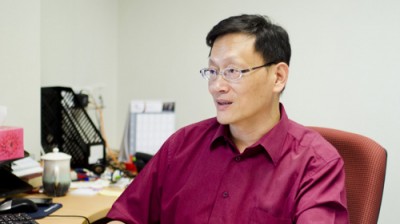Why Singapore’s English Teachers Should Embrace Singlish, Not Fight It
Is it time for Singaporean educators to embrace Singlish as a legitimate learning tool? What the Research […]
Read More
When social media is introduced in the classroom – do we simply mean that teachers should use it as a teaching tool? Not so, apparently!
It started out as a research study to understand how local youth use social media. The results came as a surprise to researcher and social-media enthusiast Dr Victor Chen. Unlike American youth, our local youth spend one-third of their time online for school work.
“In the US, students are friendship-driven 70% of the time and interest-driven for 30% when they use social media,” Victor says. “But in Singapore, our study shows that our students are also school-driven!”
Victors feels that it could be due to Ministry Of Education’s Masterplan 3, which encourage schools to integrate the use of information technology into lessons.
Most students in his study used social media for coordination, information collection and collaboration for projects. While many may feel that the results of Victor’s research study is a sign that we are on the right track, he feels that we need to look deeper into how social media is really being used.
 “There is a distinction between learning and schooling,” Victor says.
“There is a distinction between learning and schooling,” Victor says.
“Learning is about the transformation of children into learners who are inquisitive to the unknown, whereas schooling is institutionalization of children into students who are confirmative to the known.”
While the latter means studying a certain subject or topic based on a pre-defined set of rules and learning outcomes, learning is a generic reference to acquiring knowledge – any knowledge with no boundaries.
And one of the best ways to learn is via social media; it’s an open portal for knowledge seekers. The tricky part, however, only emerge when a set of “rules” is introduced during the use of this platform.
Victor feels that the existence of “rules” will create a schooling culture, rather than a learning culture. This, in turn, creates students who are school-driven when they use social media. To him, this dilutes the essence of social media.
To liberate learning is the ideology of social media. “It is about the democratization of learning,” Victor explains.
This simply means that students are given the liberty to choose what they like to learn and how they wish to learn it. “In the new media space, you can excel in photography if you want to,” he adds, “even if you are a 10-year-old. There are no pre-defined rules.”
The online world offers users an array of opportunities and possibilities. But are we using it to its full potential?
Imagine social media as a computer. In the early days when the computer was introduced in schools, it was used mostly as a reading tool. “They scan a book and put it on the computer so students can read on them,” Victor shares. “But there is no difference with reading on paper itself.”
It is only much later that people start to realize that they can also use the computer to connect with others.
The same goes for social media – it is mostly used as a teaching or classroom management tool. However, Victor feels that social media has much more to offer.
“You can use, for example, Facebook, to share a project but that isn’t considered social media because you are not using it in a ‘social-media’ way. Rather, it is used in a technological way, as a tool.”
“The use of social media comes with free choice,” he explains further. “If students are not given the free choice (to learn what they want), then we are missing the point.”

The main thing teachers can do is to encourage creativity and criticality among the students, shares Victor. “Give them some direction and encourage them to spend some time in that big space.”
Apart from the democratization of learning, social media also put the users in an “experimental space” where one can learn from mistakes. Victor feels that the online world is more forgiving compared to the real world. “You need the kind of safe environment and culture that allow students to make mistakes and experience the consequences,” he says.
For example, an online social media user can close his or her account, create a new one, and have a new identity – something not possible in real life.
And it is in that very big, experimental space where students will have a chance to learn what they are truly passionate about!